Welcome to our free classical music site

Do you write about classical music? Are you a blogger? Want to team up with Classical Connect? Send us a message, let's talk!

Do you write about classical music? Are you a blogger? Want to team up with Classical Connect? Send us a message, let's talk!
August 1, 2016. Dufay and the early Renaissance, part 1. August 5th is sometimes associated with the name of Guillaume Dufay, one of the greatest composers of the early Renaissance. History recorded very few birth dates of composers of that period, and for the early Renaissance ones, even the year is usually speculative. In the case of Dufay, his birth date (August 5th of 1397) was “calculated” retroactively from some later events in his life by musicologists;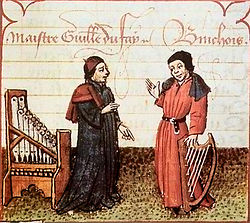 no direct record exists and other musicologists think it was sometime in 1400. So we write about composers of that era infrequently, even though they are very important in the forming of what we know as Western classical music.
no direct record exists and other musicologists think it was sometime in 1400. So we write about composers of that era infrequently, even though they are very important in the forming of what we know as Western classical music.
The notion of “Renaissance” was probably first consistently applied by Giorgio Vasari around 1550 in his book The Lives of Artists, even though two centuries earlier, in Decameron, Boccaccio talked about Giotto bringing light back to art that was dark for centuries. Still it was Vasari who clearly defined the break with the past, which he associated with two great Florentine painters, Giotto and Cimabue, who worked at the end of the 13th – beginning of the 14th centuries. The term itself wasnot popularized till the mid-19th century, first by the French historian Jules Michelet and then by Jacob Burckhardt, the Swiss historian of art and culture. For both of them “Renaissance” meant first and foremost visual arts and literature. For music, the term Renaissance had not been applied till the late 19th century, and even then rather vaguely and historically ill-defined. But if we look back we’ll see that as early as in the 15th century, the Franco-Flemish composer and music theorist Johannes Tinctoris had a sense that something had changed in the art of music. In his treaties called Proportionale he wrote around 1440: “At this time, consequently, the possibilities of our music has been so marvelously increased that there appears to be a new art, if I may so call it, whose found and origin is held to be among the English, of whom Dunstable stood forth as chief. Contemporary with him in France were Dufay and Binchois, to whom directly succeeded the modern Ockeghem, Busnois, Regis and Caron, who are the most excellent of all the composers I’ve ever heard.” Even though in this passage Tinctoris doesn’t mention Guillaume Dufay, we know that he had enormous respect for him (which should be expected, as Tinctoris was Dufay’s student at the cathedral of Cambrai). From this paragraph, and also from the writings of the musicologists of the 19th and the 20th centuries, we can see that the Renaissance in music started somewhere between 1400 and 1430, more than 100 later than the Italian Renaissance in arts and literature.
The music of the early Renaissance is usually associated with Burgundy. In the early 15th century, the Duchy of Burgundy was probably the most stable and prosperous state in Europe. Led by the Valois branch of the royal family, closely related to the French kings, it acquired many principalities of what is now Belgium and the Netherlands: Flanders, Brabant, Hainault, also the Duchy of Luxemburg and many others. While France was ravaged by the Hundred Years' War, which started in 1337 and lasted till 1453, Burgundy prospered. Before the war, Paris was the cultural center, as was Avignon (wherethe Popes temporarily moved from Rome), but by the early 15th century the center migrated to Burgundy. The Dukes were not just patrons of music, they actively participated in music-making. Burgundy was unusual in that the Dukes liked to move from one city to another, and the court, with all the musicians and artists, moved with them. Dijon wasthe administrative center of the state, but Brussels, Bruges and other larger cities of the Low Countries thus benefitted from its cultural riches.
Another event that tremendously benefitted the development of music was the invention, by Johannes Gutenberg, of the movable print in 1450. Though first it was used to print books (the Bible first and foremost) very soon it was applied to the music publishing business. Before Gutenberg, music was copied by hand, usually by monks. Using the movable press, printed music became cheaper, copies more numerous, and new musical ideas could be disseminated all over Europe.
We’ll continue with several individual composers of the period in the next post. The miniature above is from a page of a manuscript of Martin le Franc shows Dufay (on the left) and Binchois.Permalink
July 24, 2016. Minor notables. Ernest Bloch, a Swiss-American composer, was born this day in 1880 in Geneva. He went to Brussels to study violin with Eugène Ysaÿe. He began composing at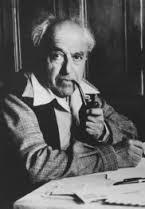 the age of nine, and took formal classes in Frankfurt in 1900. He moved to Paris and then back to Geneva where he married and joined his father’s business as a bookkeeper and salesman. He continued to compose, sporadically, kept up his musical connection and in 1916 went on a tour of the United States with a dance company as a conductor. The tour was a failure but Bloch was offered a position at the newly organized David Mannes College of Music in New York. Around that time he composed what would become his best known composition, Schelomo, Rhapsodie Hébraïque for Cello and Orchestra, the final work of his “Jewish cycle” (Bloch was Jewish). It was well received and remains popular to this day. In 1920 he became the founding director of the Cleveland Institute of Music, where he served for five years. In 1925 he moved to San Francisco to lead the local conservatory. In the 1930s Bloch lived mostly in Switzerland but returned to the US in 1940. He taught at Berkeley and continued to compose. Bloch died on July 15th of 1959. Here’s a recording of Schelomo made by Mstislav Rostropovich in 1977. Leonard Bernstein is leading the Orchestre National De France.
the age of nine, and took formal classes in Frankfurt in 1900. He moved to Paris and then back to Geneva where he married and joined his father’s business as a bookkeeper and salesman. He continued to compose, sporadically, kept up his musical connection and in 1916 went on a tour of the United States with a dance company as a conductor. The tour was a failure but Bloch was offered a position at the newly organized David Mannes College of Music in New York. Around that time he composed what would become his best known composition, Schelomo, Rhapsodie Hébraïque for Cello and Orchestra, the final work of his “Jewish cycle” (Bloch was Jewish). It was well received and remains popular to this day. In 1920 he became the founding director of the Cleveland Institute of Music, where he served for five years. In 1925 he moved to San Francisco to lead the local conservatory. In the 1930s Bloch lived mostly in Switzerland but returned to the US in 1940. He taught at Berkeley and continued to compose. Bloch died on July 15th of 1959. Here’s a recording of Schelomo made by Mstislav Rostropovich in 1977. Leonard Bernstein is leading the Orchestre National De France.
John Field, Irish composer and pianist, was born on July 26th of 1782. The “father” of the Nocturne, and in that Chopin’s precursor (on a much smaller scale), Field moved to London to study with Muzio Clementi. He soon became famous as a young virtuoso; Haydn, during one of his trips in London, heard him play and praised him in his notebook: “Field a young boy, which plays the piano extremely well.” In 1802 Field followed his teacher Clementi to Russia. Clementi, a composer and a pedagogue, was also in the piano business, and used Field to demonstrate pianos to potential customers. Clementi left Russia in 1803 but Field stayed behind. He played numerous concerts, first in St.-Petersburg and then in the Baltics and Moscow. In 1806 he moved to Moscow and lived there for five years, eventually returning to St.Petersburg. Popular not just as a concert pianist but as a private tutor, he became the most expensive piano teacher in Russia. In 1810 he married one of his pupils, a French actress and pianist named Adelaide Percheron. The 1810s was a productive period when he wrote most of his nocturnes. They would later be much admired by Chopin and Liszt. The feeling was not reciprocal, as Field was critical of both. Field stayed in Russia till 1831 when he went to London for an operation: he had rectal cancer. After the operation, he unsuccessfully tried to resurrect his pianistic career. He ended up in a hospital in Naples, penniless, and had to be rescued by his Russian friends who brought him back to Moscow. There he died on January 23rd of 1837. Here’s John O’Connor playing Field’s Nocturne no. 5 in B-flat Major.
If Field was famous for his piano music,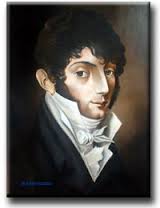 who was born one year earlier, on July 27th of 1781, became famous for his music for the guitar. The early 19th century, the time Giuliani was growing up, was aperiod of deep decline in classical music in Italy. The only musical form that was flourishing was the opera. So, as many of his compatriots, the young Giuliani moved up north and settled in Vienna. Even though his first instrument was the cello, he became famous as the greatest guitar virtuoso, acknowledged by musicians and the court. He was one of the first to compose and perform a concerto for the guitar and symphony orchestra. He became acquainted with all of the prominent musician of Vienna, starting with Beethoven. He performed chamber concerts with the best local musicians, and composed, mostly for the guitar. In 1819 he returned to Italy, first to Rome and then to Naples. That’s where he died, on May 8th of 1829, just 47 years old. Here’s his Prelude op.83 no. 2, performed by Dmitry Teslov.Permalink
who was born one year earlier, on July 27th of 1781, became famous for his music for the guitar. The early 19th century, the time Giuliani was growing up, was aperiod of deep decline in classical music in Italy. The only musical form that was flourishing was the opera. So, as many of his compatriots, the young Giuliani moved up north and settled in Vienna. Even though his first instrument was the cello, he became famous as the greatest guitar virtuoso, acknowledged by musicians and the court. He was one of the first to compose and perform a concerto for the guitar and symphony orchestra. He became acquainted with all of the prominent musician of Vienna, starting with Beethoven. He performed chamber concerts with the best local musicians, and composed, mostly for the guitar. In 1819 he returned to Italy, first to Rome and then to Naples. That’s where he died, on May 8th of 1829, just 47 years old. Here’s his Prelude op.83 no. 2, performed by Dmitry Teslov.Permalink
July 18, 2016. Beethoven Symphony No. 6. Today we’ll present an article by Joseph DuBose on one of the most popular symphonic pieces in all of music literature: Beethoven’s Sixth Symphony (“Pastoral”). The problem we encountered was with the selection of the recording to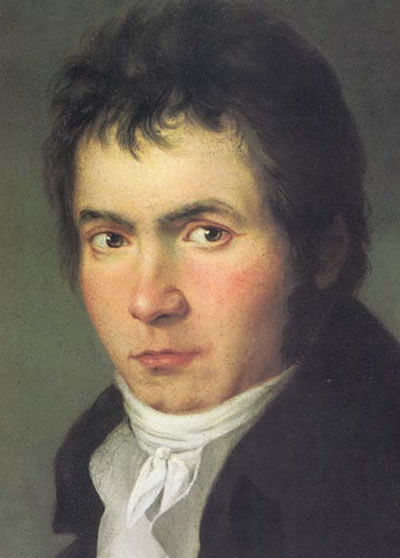 illustrate the article: there are just too many good ones. The “Pastoral” is one of the most often recorded symphonies, and great recordings go back to the early years of the industry. To list them would be to list the names of all great conductors of the 20th century. We decided on the live recording made by the Concertgebouw Orchestra under the direction of Bernard Haitink. We don’t claim that it’s the best but it is indeed excellent. Here it is. ♫
illustrate the article: there are just too many good ones. The “Pastoral” is one of the most often recorded symphonies, and great recordings go back to the early years of the industry. To list them would be to list the names of all great conductors of the 20th century. We decided on the live recording made by the Concertgebouw Orchestra under the direction of Bernard Haitink. We don’t claim that it’s the best but it is indeed excellent. Here it is. ♫
Each of Beethoven’s symphonic works up to the C minor Symphony represent individual steps in the determined path the composer set out on. In the first two, he adhered to the models of Mozart and Haydn, but only just so. His creative genius was already pushing out against the established manners and proportions of the symphony. The Eroica left behind all that was known and was the first significant work on the “new path” Beethoven declared in 1802. The B-flat Symphony which soon after followed, in outward appearance at least, may seem like a regression from the Eroica. Yet, even if it is stricter in form than its predecessor, the same passionate emotions pulse beneath its surface. The C minor, then, is the fusion of both works—that taut forms of the Fourth combined with the seriousness and heroism of the Eroica. However, with the Sixth Symphony, or the “Pastoral” as it is so often called, Beethoven presents us with a work entirely different from its any of its predecessors. That it came to birth alongside the fiery C minor is remarkable indeed. It is a startling revelation of the great breadth of the composer’s imagination, that he could conceive so vastly different works at the same time.
The “Pastoral” Symphony is Beethoven’s homage to nature. For him, nature was an absolute necessity—for life and for creative endeavors. He spent the better part of his summers wandering the wooded countrysides of Hetzendorf, Heiligenstadt, and Döbling. It was in these rustic environs that he conceived and drafted many of his greatest compositions, which were then completed and put into score during his winters in Vienna.
From a historical perspective, the Sixth Symphony was the first truly successful example of “program music,” and laid the groundwork for the concert overtures of Mendelssohn and the symphonic poems of Liszt. Yet, contrary to those later masters (Liszt in particular), Beethoven recognizes the limitations of music as an artistic medium. Though he has provided subtitles for each individual movement that succinctly describe the picture being painted by the music, he provides the crucial key to his intent beneath the work’s title: “More an expression of feeling than a painting.” Indeed, it is apparent in the conception of the symphony that Beethoven was quick to avoid any instance of actual imitations of sights or sound. Indeed, even the celebrated imitations of birdcalls towards the conclusion of the second movement Beethoven has admitted were intended as a practical joke, and the section as a whole is more in keeping with the capricious outbursts found in his other symphonies than any attempt at blatant tone-painting. (Continue reading here).Permalink
July 11, 2016. Bononcini. Giovanni Bononcini was born this week, on July 18th of 1670, in Modena. At the zenith of his career he was one of the most famous composers in Europe and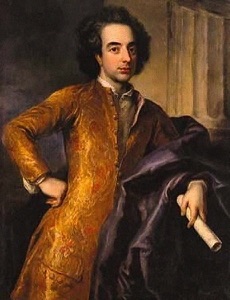 George Frideric Handel’s competitor. Bononcini was a son of composer and theorist Giovanni Maria Bononcini. Giovanni Maria died in and Giovanni moved to Bologna, where he continued his musical education and wrote his first compositions. By the age of 15 he published three collections of music, and three years later composed a mass. In 1691 Bononcini went to Rome and entered the service of Filippo Colonna (Colonna, a scion of one of the most colorful Italian families, with many ducal and princely titles to the name, was also a great-nephew of Cardinal Mazarin). A man of letters and a member of the Accademia degli Arcadi, Colonna had in his employ Silvio Stampiglia, a famous librettist. Together, Bononcini and Stampiglia wrote ten operas. Their opera Xerse became a huge success. Here’s the aria Ombra mai fu from Bononcini’s Xerse. We all know Handel’s magnificent Ombra mai fu (here) from his opera of the same name. When you listen to Bononcini, you’ll recognize the Handel, and not by chance: Handel used Bononcini’s aria for his own setting. Clearly, intellectual property was not as sacrosanct in the 17th and 18th centuries as it is now. It turns out that this particular “borrowing” has an even longer history, because Bononcini wasn’t the first. He actually used the music of Francesco Cavalli, who wrote his own Xerse in 1654. The opera contained an aria, Ombra mai fu (“Never was a shade...”), which became very popular. Here’s the “original” (Cavalli) version. The libretto for Cavalli’s opera was written by Nicolò Minato; it was reused by both Bononcini and Handel. Bononcini’s version is performed by the German soprano Simone Kermes (she’s wonderful in the Baroque repertory – listen to her in Alessandro Scarlatti’s Cara tomba, from Il Mitridate Eupatore). The Cavalli is sung by the Belgian counter-tenor Rene Jacobs, who also conducts the performance. The Handel is performed by the great mezzo, Cecilia Bartoli.
George Frideric Handel’s competitor. Bononcini was a son of composer and theorist Giovanni Maria Bononcini. Giovanni Maria died in and Giovanni moved to Bologna, where he continued his musical education and wrote his first compositions. By the age of 15 he published three collections of music, and three years later composed a mass. In 1691 Bononcini went to Rome and entered the service of Filippo Colonna (Colonna, a scion of one of the most colorful Italian families, with many ducal and princely titles to the name, was also a great-nephew of Cardinal Mazarin). A man of letters and a member of the Accademia degli Arcadi, Colonna had in his employ Silvio Stampiglia, a famous librettist. Together, Bononcini and Stampiglia wrote ten operas. Their opera Xerse became a huge success. Here’s the aria Ombra mai fu from Bononcini’s Xerse. We all know Handel’s magnificent Ombra mai fu (here) from his opera of the same name. When you listen to Bononcini, you’ll recognize the Handel, and not by chance: Handel used Bononcini’s aria for his own setting. Clearly, intellectual property was not as sacrosanct in the 17th and 18th centuries as it is now. It turns out that this particular “borrowing” has an even longer history, because Bononcini wasn’t the first. He actually used the music of Francesco Cavalli, who wrote his own Xerse in 1654. The opera contained an aria, Ombra mai fu (“Never was a shade...”), which became very popular. Here’s the “original” (Cavalli) version. The libretto for Cavalli’s opera was written by Nicolò Minato; it was reused by both Bononcini and Handel. Bononcini’s version is performed by the German soprano Simone Kermes (she’s wonderful in the Baroque repertory – listen to her in Alessandro Scarlatti’s Cara tomba, from Il Mitridate Eupatore). The Cavalli is sung by the Belgian counter-tenor Rene Jacobs, who also conducts the performance. The Handel is performed by the great mezzo, Cecilia Bartoli.
While in Rome, Bononcini became a member of the important musical Accademia di Santa Cecilia, and was also invited to join the Arcadian Academy. Following the death of Filippo’s wife in 1697, Bononcini left Rome for Vienna, where he was invited to the court of the Emperor Leopold I. He stayed in Vienna for five years and then moved to Berlin on the invitation of Queen Sophia Charlotte, the wife of Frederick I of Prussia. Around 1715 Bononcini returned to Rome. His opera Camilla was highly successful and was staged not just in Italy but also in London. That’s where he went in 1720. Handel was the king of opera, but the first several seasons were highly successful for Bononcini. Three quarters of all performances given by the Royal Academy of Music were of Bononcini’s music. That, unfortunately, changed as the Jacobite risings made Bononcini, a Catholic, politically unacceptable. He considered leaving London but the Duchess of Marlborough offered him a stipend of £500 a year for life, so he stayed. An unfortunate affair followed in 1731. A friend of Bononcini’s, composer Maurice Greene introduced a manuscript of a madrigal, which he claimed to be written by Bononcini. The madrigal turned out to be by Antonio Lotti. This was too much even in the era of free borrowing. Greene was forced to quit the Academy of Ancient Music, and Bononcini had to leave London. He went to France. He continued moving from one European capital to another until settling in Vienna in 1737, where the Empress Maria Theresa provided him with a small pension. There he stayed till his death in 1747.
Compared to Handel, it is obvious that Bononcini’s talent was on a smaller scale and more conservative. Still, his melodic gifts were amazing. Just listen to the aria Per la gloria d’adorarvi from his opera Griselda (it doesn’t hurt that it’s performed by Luciano Pavarotti).Permalink
July 4, 2016. Mahler, Symphony no. 4. Gustav Mahler was born on July 7th of 1860, and to celebrate his birthday we will again turn to one of his symphonies, this time the Fourth. Mahler started working on the Fourth Symphony in 1899.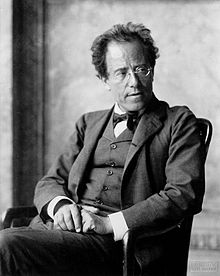 By then he had moved from Hamburg to Vienna, having received the appointment to the Vienna Hofoper (the Court opera theater) in 1897. To be even considered for the position, he had to convert to Catholicism: as liberal as the Emperor Franz Joseph was, to have a Jewish conductor of the main opera was unthinkable. Mahler, an agnostic, had no qualms: the ceremony took place on February 23, 1997. In April he started as the Kapellmeister and in September of the same year Mahler was promoted to director. He understood that his position would not be easy: much of the Viennese public and a good number of music critics were anti-Semitic, and didn’t care about Mahler’s conversion. One of the leaders of the anti-Semitic camp was the very popular mayor, Karl Lueger, who also founded the Austrian Christian Socialist party, a precursor of the German National-Socialists (Lueger was a very efficient administrator, and is credited with transforming Vienna into a modern city; still, the fact that a monument to him still stands in the center of Vienna in a square called Doktor-Karl-Lueger-Paltz is inconceivable). In financial terms, Mahler’s life became quite comfortable. He rented a large apartment on Auengruggergasse, number 2, a building next to the Belvedere Gardens (it was designed by Otto Wagner, the leading Art Nouveau architect).
By then he had moved from Hamburg to Vienna, having received the appointment to the Vienna Hofoper (the Court opera theater) in 1897. To be even considered for the position, he had to convert to Catholicism: as liberal as the Emperor Franz Joseph was, to have a Jewish conductor of the main opera was unthinkable. Mahler, an agnostic, had no qualms: the ceremony took place on February 23, 1997. In April he started as the Kapellmeister and in September of the same year Mahler was promoted to director. He understood that his position would not be easy: much of the Viennese public and a good number of music critics were anti-Semitic, and didn’t care about Mahler’s conversion. One of the leaders of the anti-Semitic camp was the very popular mayor, Karl Lueger, who also founded the Austrian Christian Socialist party, a precursor of the German National-Socialists (Lueger was a very efficient administrator, and is credited with transforming Vienna into a modern city; still, the fact that a monument to him still stands in the center of Vienna in a square called Doktor-Karl-Lueger-Paltz is inconceivable). In financial terms, Mahler’s life became quite comfortable. He rented a large apartment on Auengruggergasse, number 2, a building next to the Belvedere Gardens (it was designed by Otto Wagner, the leading Art Nouveau architect).
For the first two years in Vienna Mahler was so involved with the Opera that there was no time for him to compose. A perfectionist, he rehearsed every production for many weeks at a time and was very demanding, overseeing all aspects of every production. That didn’t endear him to the singers and the orchestra. On the other hand, the repertory and the quality of the opera house improved dramatically. The first opera to be staged under Mahler’s direction was Wagner’s Lohengrin; Mozart‘s Die Zauberflöte followed. Both were a huge success. Mahler also took over the subscription concerts of the Philharmonic, which were previously lead by the famous conductor Hans Richter. There were days when he conducted a symphony concert during the day and an opera in the evening. The workload was enormous and stressful. He was also affected by the plight of his close friend Hugo Wolf, who, suffering from the late stages of syphilis, fell into dementia and was sent to an asylum. With a long concert and opera season fully consumed by directing and conducting, the summer months became very important to Mahler as the time to unwind and, more importantly, to compose. In the summer of 1899 Mahler rented a summer-house in Steinbach on lake Altaussee, not far from Salzburg. A fashionable resort, it was frequented by writers and journalists, such as Hugo von Hofmannsthal and Theodor Herzl. It wasn’t his first visit to Steinbach: there he composed parts of the Second and Third Symphonies. He even built a “composing hut” there, to seclude himself from the summer crowd. It was in Steinbach that Mahler started working on his Fourth Symphony. The pattern – conducting and directing during Vienna’s musical season and composing during the summer months – was firmly established the next year, when Mahler decided to go to the village of Maiernigg on lake Wörthersee in Carinthia. Eventually he would build a small hut there as well so that he could compose without being interrupted. The Fourth Symphony was completed that summer. It’s the last of the so-called Wunderhorn symphonies: every one of the first four incorporates some music from the Des Knaben Wunderhorn collection, Mahler’s setting of German folk poems. In the case of the Fourth symphony, it’s the song, "Das himmlische Leben" (“The Heavenly Life”), originally written in 1892, that Mahler re-orchestrated into the fourth movement of the symphony. Here it is, with Claudio Abbado conducting “Mahler’s own” Vienna Philharmonic Orchestra; Frederica von Stade is the mezzo soprano.Permalink
June 27, 2016. Four Klavierstücke, op. 119 by Brahms. Below is an article by Joseph DuBose about the last set Johannes Brahms ever wrote for piano solo. We illustrate it with performances by Alon Goldstein and Matthew Graybil. ♫
The 4 Klavierstücke, op. 119 is the last of Brahms’s compositions for his own instrument. While it is true that the 51 Übungen were published later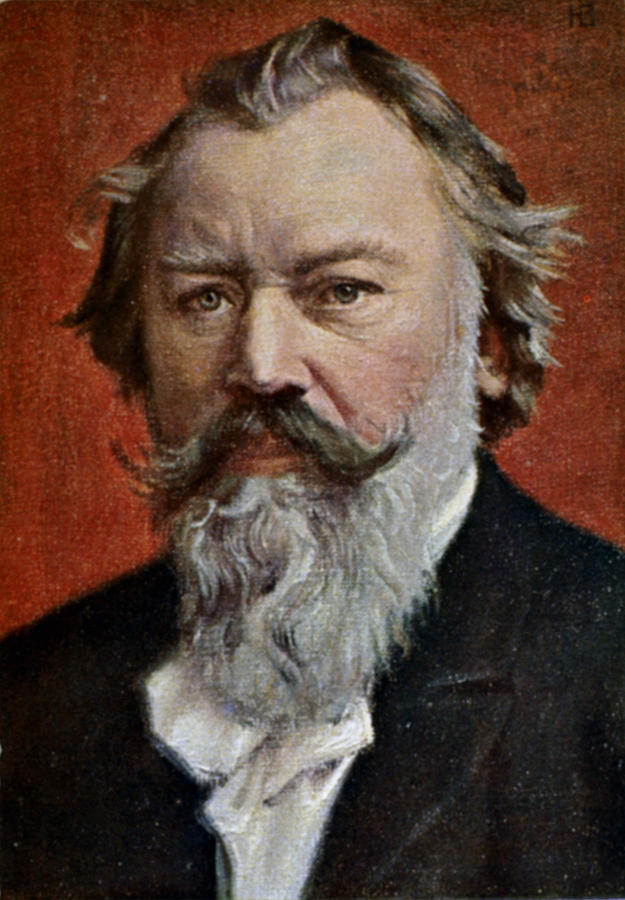 , these exercises were nevertheless compiled over several years from works already written. In the wake of the E-flat minor Intermezzo that closed the op. 118, the current collection opens with two similarly introspective minor key intermezzi. The first, in B minor, passes by with resigned melancholy and a cool detachment that aptly follows such a heart-wrenching expression of emotion. The following E minor Intermezzo, on the other hand, builds out of a nervous energy, and by its conclusion begins to turn towards a brighter mood. The C major Intermezzo that follows abounds with rhythmic energy, and quite fittingly sets the stage from the robust and dynamic E-flat major Rhapsodie. An appropriate end for Brahms’s solo piano music, the Rhapsodie abounds with the virile energy of the early Rhapsodies while also looking back at times to the op. 10 Ballades.
, these exercises were nevertheless compiled over several years from works already written. In the wake of the E-flat minor Intermezzo that closed the op. 118, the current collection opens with two similarly introspective minor key intermezzi. The first, in B minor, passes by with resigned melancholy and a cool detachment that aptly follows such a heart-wrenching expression of emotion. The following E minor Intermezzo, on the other hand, builds out of a nervous energy, and by its conclusion begins to turn towards a brighter mood. The C major Intermezzo that follows abounds with rhythmic energy, and quite fittingly sets the stage from the robust and dynamic E-flat major Rhapsodie. An appropriate end for Brahms’s solo piano music, the Rhapsodie abounds with the virile energy of the early Rhapsodies while also looking back at times to the op. 10 Ballades.
The B minor Intermezzo (here) makes the most direct use of the descending thirds motif since the Caprice in D minor that opened op. 116. Whereas in the Caprice the thirds were used to great effect both melodically and contrapuntally, the effect here is entirely harmonic. As the thirds descend, the tones overlap resulting in beautiful, impressionistic chords of the ninth and eleventh that place the music in a twilit area between the keys of B minor and D major. Atop these luscious harmonies, a melancholy tune more suggestive of D major until its final cadence, floats across the hazy harmonic landscape. While this principal melody comes to a close on a definitive half cadence in B minor, a firm assertion of the tonic is avoided by the immediate appearance of a secondary theme unmistakably in the key of D major. This new theme struggles to give voice to the inner turmoil of the piece, as it builds fervently over chromatically rising harmonies into a forte that inevitably melts away over dominant seventh chords obscured by two chromatic lines moving in contrary motion. The melody starts again, though now altered, and builds more quickly into a more fulfilling climax on the dominant, reinforced by rippling triplets in the bass. A moment of resignation is then reached as the music begins to die away with poignant sighs that fall from the upper register into the bass. Like a fog rolling in, obscuring everything within its reach, the descending thirds return in a four measure transition that brings about a slightly embellished reprise of the opening. A brief coda, built on the plaintive sighs heard earlier, begins to reaffirm the D major tonality. However, just prior to the expected cadence it gives way to a final chain of thirds that spans across all the tones of a thirteenth chord before resolving into a final B minor chord (continue reading here).Permalink